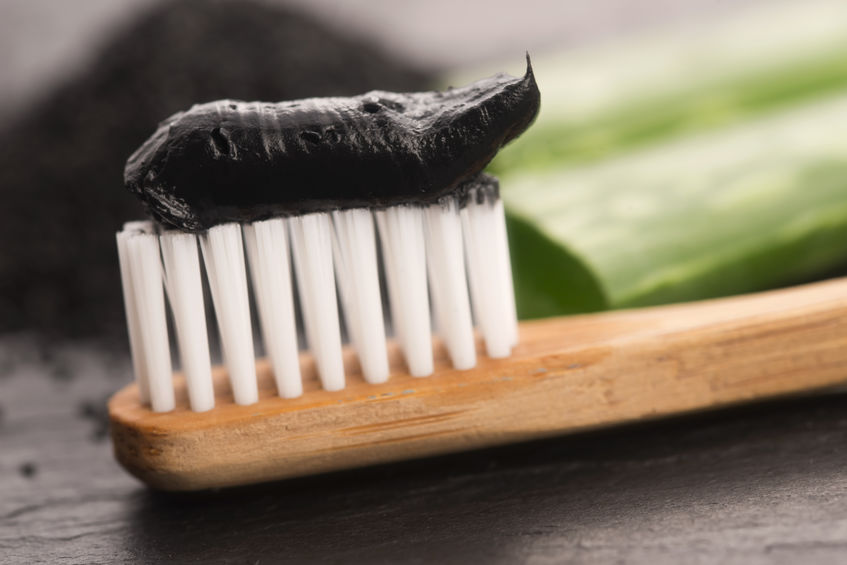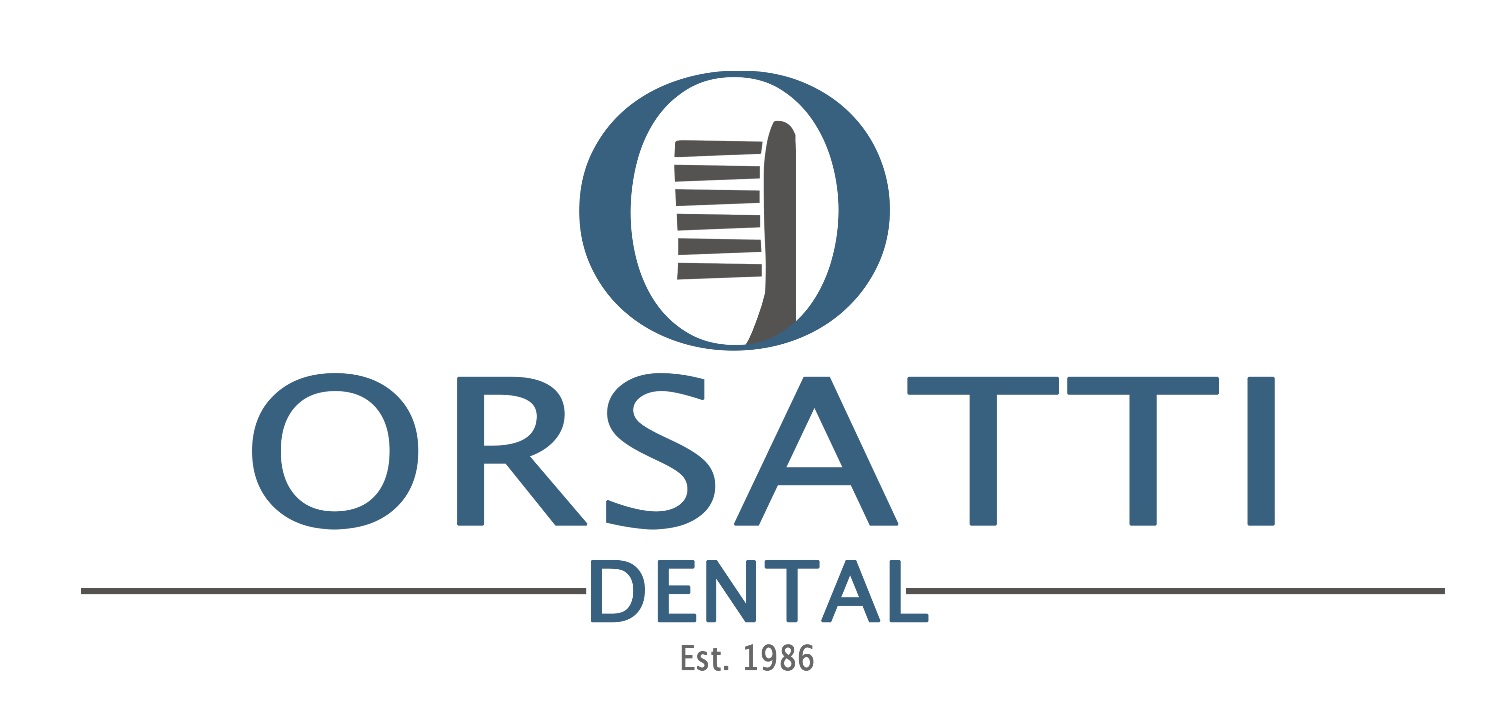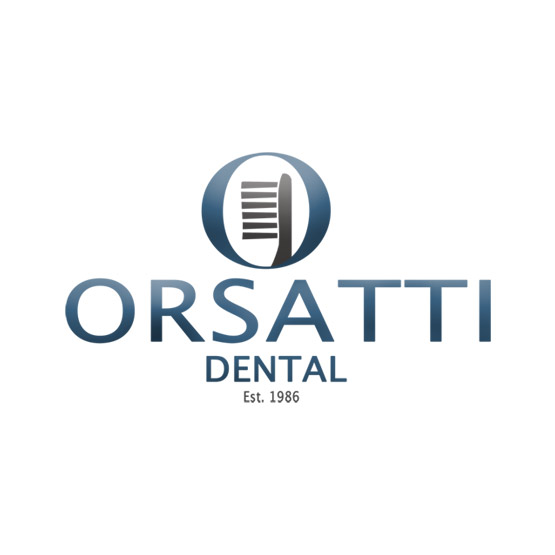
Charcoal Toothpaste – Orsatti Dental in San Antonio
Gone are the days that charcoal only meant black lumps used for outdoor grilling, as today, charcoal is increasingly common in beauty supplies. It can be found in face masks, diet pills, pore strips, and even toothpaste. This is unsurprising, as charcoal has the ability to attract and latch on to dirt, oil, and other chemicals. These detox claims, while seemingly odd, have attracted a loyal following in the last several years. If you have been on social media recently, you should be familiar with the concept of charcoal toothpaste. Influencers on Instagram and other social media sites have been hawking the grainy, black toothpaste as a natural alternative to teeth whitening procedures. While it presents a visual paradox (black goop to create white teeth), is it even possible that charcoal toothpaste may have some or all of the purported benefits?
Using charcoal in toothpaste is nothing new. In fact, there is a long history of doing so. Ancient toothpastes were used to treat some of the same concerns that we have today – keeping teeth and gums clean, whitening teeth and freshening breath. The ingredients of ancient toothpastes were however very different from what we know today. Ingredients used included a powder of ox hooves’ ashes and burnt eggshells. Romans favored more abrasiveness and their toothpaste ingredients even included bones and oyster shells. Ancient Romans added more flavoring to help with bad breath, as well as tree bark and powdered charcoal. Charcoal can also be seen in a 19th Century homemakers guide for making toothpaste at home. So while the black paste is making waves online in 2019, it has a pretty extensive history as well!
There has been a reemergence of charcoal-based toothpastes as of late with claims of whitening, antibacterial, antiviral, antifungal and breath freshening properties, according to an article published in the Journal of the American Dental Association (JADA). The marketing campaigns for these toothpastes are fashionable, trendy, and different to those for other toothpastes. This marketing has enjoyed considerable success, encouraging the introduction of related products, including charcoal toothbrushes, which have charcoal incorporated into the bristles. But does this marketing strategy hold water?
Charcoal used for cooking or artist’s pencils is typically created by slow-burning natural materials, such as wood, peat or coconut shells. Activated charcoal is created for medical or other purposes by heating regular charcoal in the presence of a gas to make it more porous. This is why it is often used in medical situations for detox, or to filter water. These pores then can absorb unwanted particles, such as dirt and oil, to be removed. In toothpaste, these particles would be viruses, plaque build up, and tartar, removed upon spitting out the toothpaste. However, there is some debate about the safety of using this type of method.
Concerns when using charcoal toothpaste
Many dentists have expressed concerns about charcoal toothpaste, as charcoal can be extremely abrasive on the sensitive enamel of the teeth. Furthermore, the absorption power of activated charcoal could be dangerous to people who take oral medicines that could also bind with the it. Additionally, whitening takes place typically when the whitening agent has time on the teeth to create change. Charcoal, like all types of whitening toothpastes, is effective at removing surface-level stains and bacteria in the mouth.
The difference between removing surface stains and whitening are based on the level of permanence. Surface stains occur in ways such as excessive coffee and red wine consumption. Acidic foods can also promote staining by etching the surface of teeth, which leaves them more vulnerable to stains. Cigarette smoking is also a major contributor to tooth discoloration. With all that said, aging and genetic characteristics can also lead to natural discoloration, even in people who avoid problematic foods and beverages. Stains occur on the enamel layer and can be improve or removed with toothpastes or home whitening treatments. This is why your teeth always look so white after a professional cleaning! Deeper stains can come from within the tooth, often from weak enamel or trauma. These deep stains affect the underlying color of your teeth and no amount of surface cleaning can reach it. Therefore, while charcoal toothpaste may remove surface level stains, a deeply penetrating in-office dental whitening treatment may be required for certain, more extensive discoloration.
There are many other types of whitening treatments as well, or the option of purchasing one of the many at-home treatments to supplement. In addition to charcoal toothpaste, there are a multitude of whitening toothpastes, mouthwashes, pens, strips or trays. Dental bleaching is also an option as an in-office treatment with your dentist for faster and more penetrating results. Veneers are also an option for teeth in serious need by a dentist. Many people also choose to try coconut oil pulling or baking soda in their own homes. While charcoal toothpaste is an option for the at-home tooth whitener, it is not the only option! Furthermore, it is important to note that charcoal will only help to whiten natural teeth, not any type of crowns, dentures, veneers, or fillings.
While there are claims that charcoal can help to detoxify your mouth, there is little to suggest that it is more intensely detoxing than your standard toothpaste. Teeth and gums are not home to toxins the way a liver would be. However, some argue that there may be properties that help to aid immunity in the body by absorbing potential viruses. Studies on this have not been thoroughly conclusive. Therefore, charcoal may be able to attract leftover food and tartar that can create foul breath, but it is unlikely to be a true detox. This is good news for those concerned about medication absorption, as it typically only occurs with prologues contact. With recommended usage (spitting and not swallowing) of charcoal toothpaste, there is very little chance that the charcoal would have enough time in contact with any medicines to disrupt their effectiveness. Medically speaking, charcoal is often used for poison control or to counteract the effects of a drug overdose so it can be very powerful. Therefore, it is up to an individual to determine if this risk is important to them.
Are there downsides to using charcoal toothpaste?
A possible downside to charcoal toothpaste comes with the very color of it. Because of it’s dark and gritty texture, particles of charcoal included in charcoal toothpaste may accumulate in crevices and other defects in teeth, including cracks in the teeth of older individuals. In addition, particles of charcoal may build up in gaps between dental restorations and teeth, resulting in a grey or black line around them. In the worst case scenario, this could necessitate replacement of the affected fillings, veneers or crowns. Therefore, it is necessary to consider this possibility if your teeth could be affected. A dentist would be able to help advise you if this could be the case.
Though there has been very little study on the abrasive effects of charcoal alone, most activated charcoal toothpastes feature abrasives like baking soda. When used for a long period of time, this can cause wear and tear that make teeth more sensitive. Destruction of surface enamel is known to also make teeth more prone to long term staining. In fact, because charcoal-containing toothpastes are black in color, brushing off the color may prolong brushing. Use of excessive brushing force, may lead to the abrasion of teeth. Most toothpastes have a score from the American Dental Association (ADA) related to their abrasiveness. Most charcoal toothpastes at this time do not release their abrasiveness scores, which are required to be under a specific value to get an ADA seal of approval. This makes it difficult to know how tough they are on enamel long-term. Dentists recommend that you find a toothpaste with ADA approval to be sure that teeth are taken care of in the long run.
Furthermore, it is important to use regular toothpaste for fluoride. Fluoride is responsible for fighting tooth decay and is found in most standard toothpastes. It important for those who are considering using charcoal products to ensure that daily use of fluoride still occurs for maximum tooth health. Charcoal toothpastes should not be assumed to be regular toothpastes to which activated charcoal has been added. In formulating charcoal toothpastes, other agents may be added to enhance the whitening effects. Certain ingredients, notably fluoride, may not be included because they will be absorbed by the charcoal, possibly reducing its whitening effect. Before purchasing a charcoal toothpaste, patients should consider the ingredients of the paste and consult with a dentist.
After reviewing a number of studies, JADA researchers concluded that more evidence is needed before they can confidently establish the safety and effectiveness of charcoal pastes. If you decide that charcoal toothpaste may be right for you, make sure to consult with your dentist for how to use it most effectively. Likely, it will be in conjunction with your everyday toothpaste and only 2-3 times per week to prevent enamel damage. Additionally, it is recommended to use by sitting on the teeth or light brushing instead of harsh, over-scrubbing of the teeth. This is to make sure that teeth and gums can receive the maximum benefits without creating any damage.
Ultimately, there is no one right answer on whether or not charcoal toothpaste is a perfect solution. It is up to you and your San Antonio dentist to determine if you are a good candidate for making the jump to utilizing it for your breath freshness and whitening needs.
Orsatti Dental is a San Antonio Dentist office, serving all of San Antonio! Orsatti Dental is located at 15303 Huebner Rd, San Antonio, TX 78248.
Contact us to learn more or to schedule an appointment

